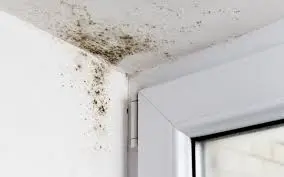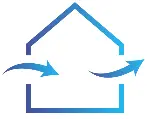Mold: how its creating and how ventilation system helps with its prevention
Mold is a common issue in damp homes that can seriously affect both health and the structural integrity of buildings. In this blog, we will explore how and when mold develops, its effects on health, and how to effectively eliminate it using a heat recovery ventilation system..
When does mold develop?
Mold thrives in damp, poorly ventilated spaces, often appearing in:
- Bathrooms and kitchens: High humidity due to showering and cooking creates an ideal environment for mold growth.
- Basements and attics: Poor ventilation and high humidity levels contribute to mold formation.
- Cold surfaces: Moisture condenses on cold surfaces, leading to mold growth..
Excessive humidity, around 80-85%, can lead to mold development. When moisture permeates building structures, it creates the perfect conditions for mold to thrive, particularly on surfaces that remain damp. Mold prefers warm and humid environments.
How does mold affect our health?
Mold can cause various health issues, including.
- Allergic reactions: Symptoms like sneezing, skin rashes, and red eyes.
- Respiratory problems: Coughing, wheezing, and asthma attacks.
- Infections: Particularly in individuals with weakened immune systems.
How to get rid of mold
For a long-term solution to excessive humidity and mold, it's crucial to identify and address the root cause:
- Check building structure: Ensure proper waterproofing and thermal insulation, and eliminate thermal bridges.
- Inspect installations and drainage: Verify that there are no leaks from installations or drainage systems.
- Remove existing mold: Use appropriate mold removal cleaners and dehumidifiers to dry out walls and eliminate mold.
- Improve ventilation: After removing the mold and its cause, ensure sufficient ventilation to prevent it from returning.
Ventilation system and how it prevents mold creation
Ventilating a building can be achieved through forced ventilation, but this can be costly and energy inefficient. Instead, opt for a heat recovery ventilation system, which provides continuous air circulation and humidity control throughout the year. These systems also help lower heating costs in winter and cooling costs in summer by recovering heat.
Mold is a serious issue that can negatively impact your health and comfort at home. Heat recovery ventilation systems are an effective solution for preventing mold by reducing humidity and improving air quality. By following the tips in this blog, you can create a healthy and comfortable living environment.

